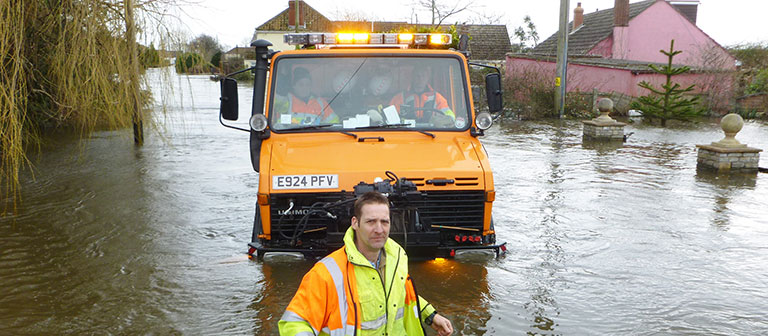Briefing: Future Local Authority Flood Funding

Local authority flood funding has changed over recent years, and is due to change again. Funding is currently made up of: council tax collected locally; 50% of the business rates collected locally; and a grant from central government called the revenue support grant. This is financed by central government funding and the 50% of local authorities business rates that they pay in to central government. As different geographical areas have different abilities to collect council tax and business rates, there is a system of redistribution through “tariffs” which takes money from those authorities who can raise more and gives “top ups” to those who can raise less.
The Autumn Statement 2015 announced that the revenue support grant will be phased out and instead 100% of business rates will remain within the local government sector. There has been a consultation on this. As well as being part of the localism agenda, part of the aim is to incentivise local authorities to generate economic activity to raise more business rates, and to build houses to raise council tax. It could come in from financial year 2019/20. DCLG and the LGA are carrying out a Fair Funding Review to develop a new redistribution system under 100% business rate retention (i.e. a new version of the tariff and top up arrangements).
Next steps
DCLG have asked Defra to suggest the basis on which flood related needs should be represented in a new distribution formula. The initial ask is for Defra to provide their suggestions for the “cost drivers” in relation to flooding, i.e. the factors which determine a local authorities’ level of need, such as: land drainage and enforcement activity on ordinary watercourses, Special Levies paid to IDBs, Local Levies paid to RFCCs, and surface water drainage advice. DCLG are planning a consultation on these cost drivers (as a whole) during 2017. ADA will continue to contribute to the discussion around fair funding for flood management by local authorities during 2017.
Archive
- April 2024
- March 2024
- January 2024
- December 2023
- November 2023
- October 2023
- September 2023
- August 2023
- July 2023
- June 2023
- May 2023
- April 2023
- March 2023
- February 2023
- January 2023
- December 2022
- September 2022
- August 2022
- July 2022
- June 2022
- May 2022
- April 2022
- March 2022
- February 2022
- January 2022
- December 2021
- November 2021
- September 2021
- July 2021
- May 2021
- March 2021
- February 2021
- January 2021
- December 2020
- November 2020
- October 2020
- September 2020
- August 2020
- July 2020
- May 2020
- April 2020
- March 2020
- February 2020
- January 2020
- December 2019
- November 2019
- October 2019
- September 2019
- August 2019
- July 2019
- June 2019
- May 2019
- April 2019
- March 2019
- February 2019
- January 2019
- December 2018
- November 2018
- October 2018
- September 2018
- August 2018
- July 2018
- June 2018
- May 2018
- April 2018
- March 2018
- February 2018
- January 2018
- December 2017
- November 2017
- October 2017
- September 2017
- August 2017
- July 2017
- June 2017
- May 2017
- April 2017
- March 2017
- February 2017
- January 2017
- October 2016
- September 2016
- August 2016
- July 2016
- June 2016
- May 2016
- April 2016
- March 2016
- January 2016
